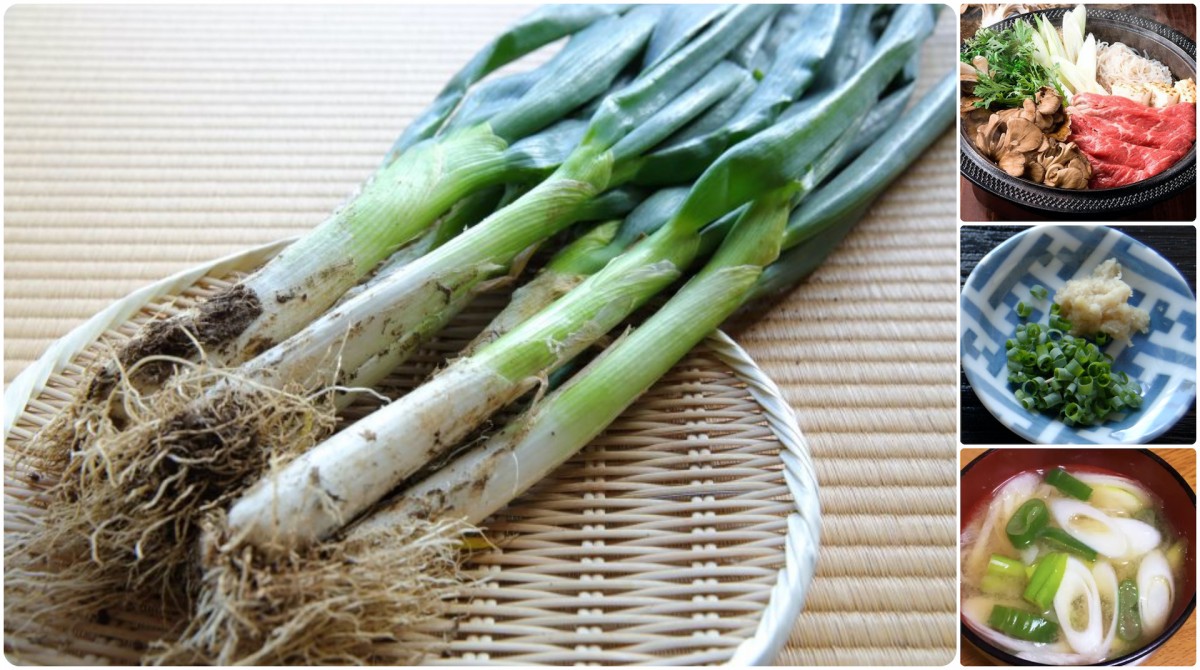Like many vegetables enjoyed in Japan today, naga negi traveled to Japan from China by way of the Korean peninsula; they have been cultivated in Japan since the 8th century. Naga [“long”] negi [“onions”] or Allium fistulosum, are called by various names outside Japan: Japanese leeks, Welsh onions, Japanese bunching onion, to name a few.
Generally speaking, naga negi are of two kinds – those with long, thick white stalks referred to as nebuka negi that thrive in colder climates (the Tohoku and Kanto regions mostly), and those with tender green leaves known as ha negi that fare better in temperate areas (Kansai and Shikoku).
Three varieties of naga negi are especially prized: (left) Yamagata Prefecture’s Hirata aka negi with red stalks, a classic nebuka; (top right) Gunma’s thick-stalked but super tender Shimonita negi, also a nubuka; and (bottom right) Kyoto’s verdant Kujō negi a model ha negi. Seeds for growing these and other varieties of naga negi are available from many specialty seed catalogues outside Japan.
Whatever variety of naga negi you can find where you reside, all will contain allicin, the primary compound responsible for members of the Allium family’s distinctive aroma and taste. Allicin is touted for supporting good health in various ways so feel free to indulge in naga negi cookery often.
And when you do, be sure to use naga negi FULLY: all parts are edible (even the roots if carefully washed).
Stay connected.
I’m looking forward to your comments on the items I post to my Facebook page!
Follow me on Twitter!
I do hope you like it!
Elizabeth Andoh A Taste of Culture Culinary Arts Program Setagaya-ku, Tokyo 158-0095, Japan


Comments